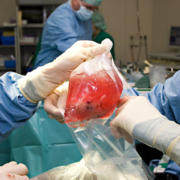A confluence of evils
There are times when you see a confluence of evils merging from afar, but they merge so slowly that most people remain totally unaware of them, or if they are they just shrug their shoulders and move on.
I first wrote about my concerns over organ donation from those requesting euthanasia (ODfE) in 2017 when Belgium was at the time pioneering the practice.
Belgium has now, unsurprisingly, been overtaken by Canada which ensured, right from the introduction of their ‘medical assistance in dying’ (MAID) legislation, that the opportunity of organ donation was embedded in the process.
National reporting of the number of organs obtained and transplanted from the euthanized is patchy and is not a statutory requirement anywhere. It is no surprise, however, that in a recent worldwide scoping review of ODfE, 39.7 per cent of the papers found were from experiences in Canada. Canada leads the world in harvesting organs from those euthanized there. One study found that in Canada, Belgium, the Netherlands, and Spain, a total of 286 people who sought euthanasia donated organs that were transplanted into 837 people. Out of those 286 donors, nearly half (136) came from Canada.
Very recently, Canadian policy guidance was updated. There are several new recommendations that are of concern including:
‘…patients who are potentially eligible for organ donation should be approached for first-person consent for donation after MAiD once MAiD eligibility has been confirmed, regardless of when their eligibility for MAiD is confirmed within the 90-day assessment period…’
‘Further work is needed to assess the potential for donation after MAiD at home in Canada. In the interim, patient-initiated requests for donation after MAiD at home warrant consideration on a case-by-case basis, where feasible.’
‘Organ donation organizations and transplantation programs should develop a policy on directed deceased donation for patients pursuing MAiD, in alignment with the directed donation principles and practices that are in place for living donation in their jurisdiction.’
With regard to the last one listed above, if a person requesting euthanasia has a relative in need of an organ, the allowance of such directed donations after euthanasia could easily precipitate subconscious or even overt pressure for the donor to go ahead with their death.
Even before this new guidance was introduced, the percentage of all deceased donors who were given MAID increased from 4.9 per cent (8/164) in 2018, to 14 per cent (24/171) in 2022. Furthermore, whilst the total number of euthanasia donors had increased almost five-fold in this period, the number of other types of deceased donors has remained about the same (156 to 147).
All of this had taken place at a time when Canada has equivocated over permitting euthanasia for solely psychiatric disorders. It has only recently decided to delay its introduction to 2027, having already deferred it to March 2024 from the previous year.
Experience in other countries where ODfE has been in place for many years and is already offered for those with mental disorders shows why organs from such cases are especially desirable for transplantation. There is usually no physical disease present that could preclude or adversely affect the quality of organs. These patients are often very young with organs which may consequently last for decades. In the Netherlands, one study shows that over the decade 2012-2022, whilst psychiatric cases only constituted two per cent of all patients given euthanasia, they never the less accounted for 29 per cent of all organ donors following euthanasia.
Public trust is crucial to maintaining levels of both deceased and living donations. Those wanting to take things a step further than ODfE by promoting euthanasia by the removal of vital organs (ERVO) show themselves all too aware of this when they state:
‘Regardless of a possible change in the law, it is crucial to avoid that the general public is given the impression that there is a “hunt” for organs, to take vital organs from a living patient.’
ERVO is the obvious next logical step in the relentless progress of what a medical colleague of mine refers to as ‘organ greed’. Standard euthanasia protocols usually adversely affect the heart with cardioplegic drugs – stopping the heart is, after all, the aim of euthanasia. However, removing the heart from unconscious anaesthetized but living patients and euthanizing them by this means, would maximise the use of organs. ERVO has, however, recently been critiqued from a personalist ethics perspective, and it would certainly violate the dead-donor rule. But calls to scrap that rule have been around for well over a decade at least.
Though the utilitarian case for ODfE and even ERVO is overwhelming, from a biblical perspective we should not ‘do evil that good may result’. (Romans 3:8) Euthanasia and suicide are both evils that are not justified, even if others may afterwards live longer as a result of receiving the organs removed from those whose lives are ended.



Leave a Reply
Want to join the discussion?Feel free to contribute!